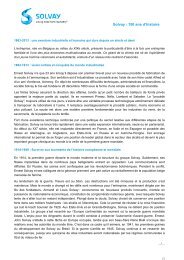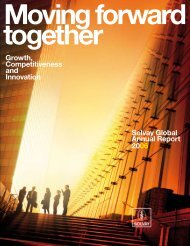solvay_live243_p02a04 somEdito
solvay_live243_p02a04 somEdito
solvay_live243_p02a04 somEdito
You also want an ePaper? Increase the reach of your titles
YUMPU automatically turns print PDFs into web optimized ePapers that Google loves.
spirit<br />
peration<br />
success factors. But if the project succeeds, the professor knows the<br />
entire clout of the Intel group is there to bring the idea to<br />
concrete realization.<br />
From research to production<br />
These laboratories operate on the principle of cooperation, rather<br />
than competition. Property rights are not exclusive, and most<br />
research results are published and widely disseminated. “It is this<br />
encouragement to share their research results which pushes researchers<br />
to work better and obtain better results”, Hans Mulder continues.<br />
Each project is closely followed by an Intel manager. It is the relationship<br />
with the researchers that the company is trying to prioritize.<br />
“We don’t want to manage a project’s details, nor can we<br />
impose it on the market. Neither can we control researchers and prevent<br />
them from deciding to change life style or to take another path,<br />
or even to move to the competition. We try therefore to maintain good<br />
relations, and even to extend these outside our structures to make sure<br />
good ideas are carried through… We believe it is better to influence<br />
the entire ecosystem to bring projects to fruition than for these to fall<br />
by the wayside”.<br />
Has Intel discovered the new path of innovation? “It’s far from<br />
simple, and to be honest I don’t have the miracle recipe”, Hans Mulder<br />
admits. “Investing in the implementation phase of a<br />
© Chris Northeast<br />
Management improvement<br />
Intel helps detect<br />
eye disease in India<br />
Under the direction of Eric Brewer,<br />
the former founder of Inktomi<br />
(search engines), the Intel laboratory<br />
at Berkeley (USA) is developing a<br />
project to make a quality infrastructure<br />
available to the poorest countries.<br />
By selecting the most standardized<br />
technologies used in the west<br />
and combining them as effectively<br />
as possible to reduce costs, the team<br />
is developing DTN (delay tolerant<br />
networking) aimed at overcoming<br />
the connectivity difficulties<br />
experienced in disadvantaged regions.<br />
This project is used for example<br />
in India to undertake eye examinations<br />
across an entire rural region.<br />
In this way people no longer travel<br />
in from their village to be examined<br />
at city hospitals. Instead a computer<br />
is installed in each village, linked<br />
to an eye analysis system.<br />
A new generation network, less<br />
demanding in terms of connectivity<br />
than the TCP/IP protocol, allows<br />
this computer to be connected up<br />
with the hospital computer.<br />
project is still the most difficult decision to take.” With their<br />
concern for cost control and their focus on today’s products –<br />
and Intel is no exception here – companies are enormously resistant<br />
to risk taking.<br />
Intel founder Andy Grove knows a thing or two about this. Forty<br />
years ago he himself quit the company he was working for. Why?<br />
Because no one at Fairchild wanted to listen to his ideas… Which<br />
is why he founded Intel! ●<br />
© Sonesh Surana<br />
J U L Y 2 0 0 6<br />
53


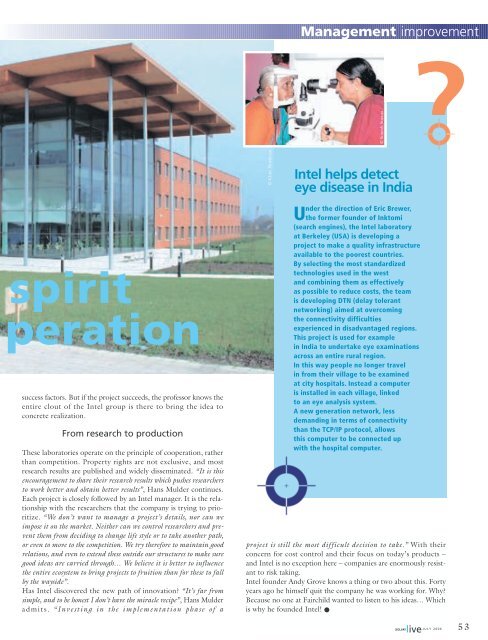

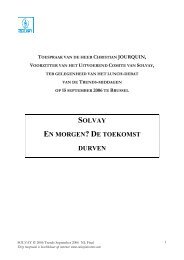
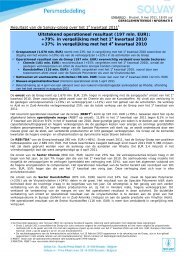

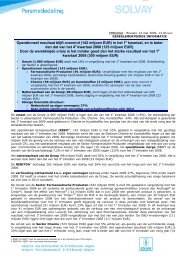
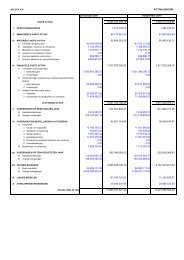

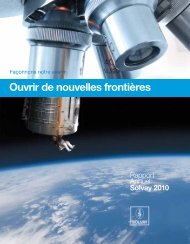
![PROC.1 [LETTRE] - Solvay](https://img.yumpu.com/16585746/1/184x260/proc1-lettre-solvay.jpg?quality=85)
